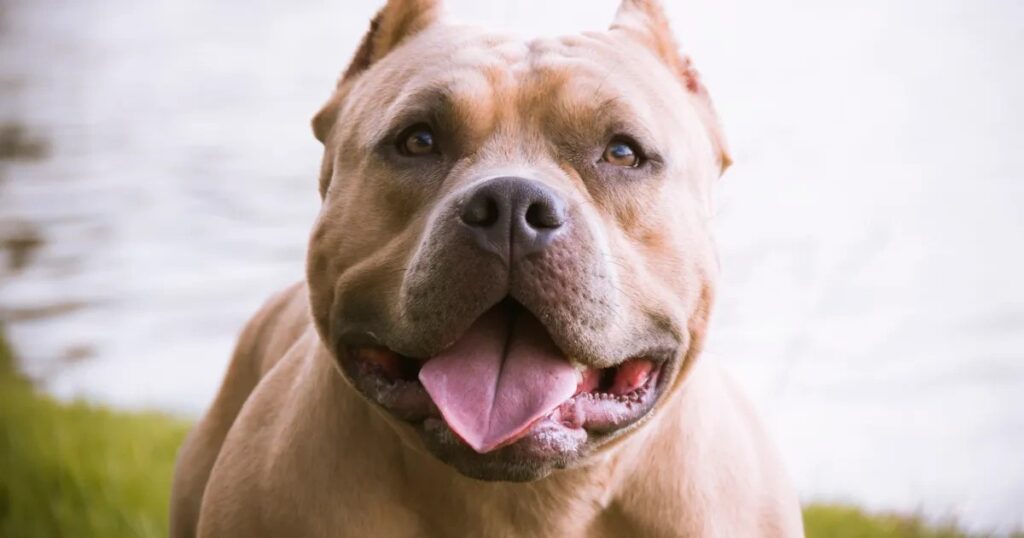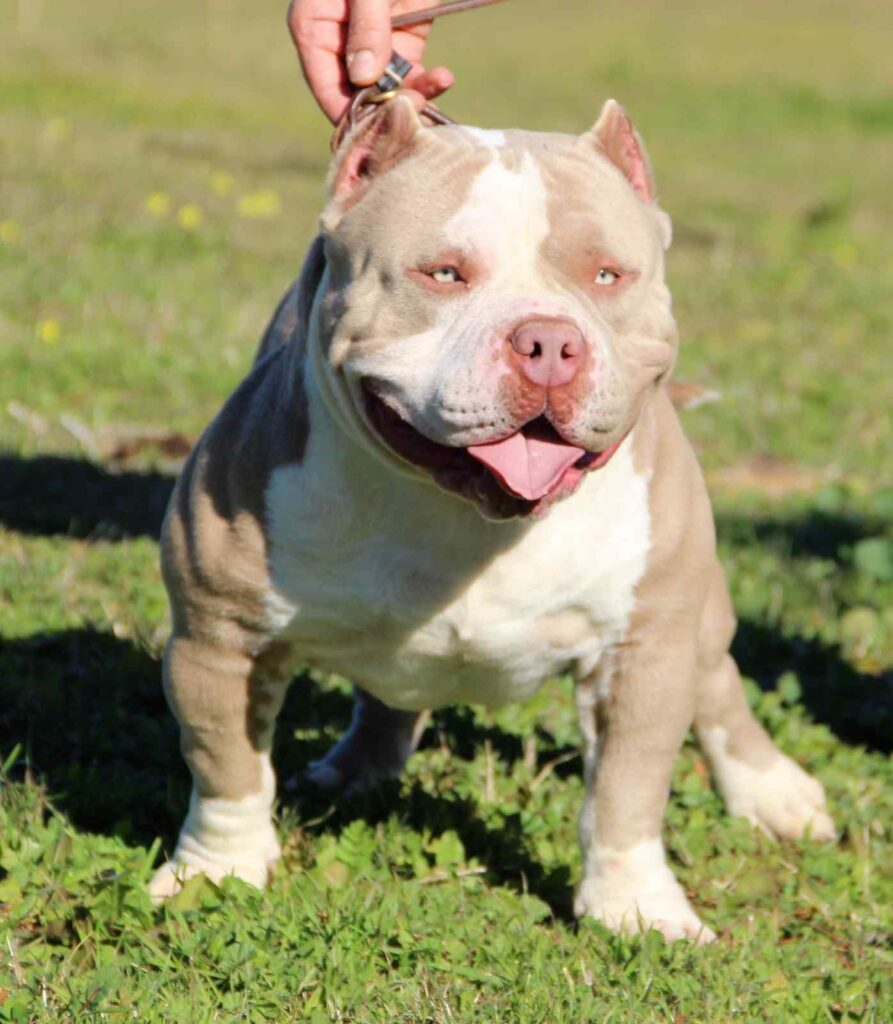Are American Bullies Aggressive? The Truth Behind This Misunderstood Breed
Are American Bullies aggressive? This question often arises when people first encounter this muscular breed with its broad head and powerful jaw. Despite their intimidating appearance, American Bullies possess a gentle and loyal disposition that makes them ideal family pets.
Many misconceptions surround this breed, but American Bully information from experts tells a different story. With a —certainly impressive—these dogs were actually developed specifically for companionship, not fighting. In fact, their growing popularity stems from their friendly nature and adaptability. Is American Bully dangerous? Contrary to popular belief, they’re known to be affectionate, loyal, and good with children. Bite force of 305 psi
In this article, we’ll explore the truth behind the American Bully’s temperament, examine common myths, and share what science actually says about this misunderstood breed. We’ll also discuss how responsible ownership and proper training play crucial roles in raising well-behaved companions rather than perpetuating unfounded stereotypes.
Are American Bullies considered an aggressive breed?

The perception of American Bullies often stems from their imposing physical appearance rather than their actual temperament. To understand whether American Bullies truly deserve their intimidating reputation, we need to first explore what canine aggression actually means.
What aggression really means in dogs
Aggression in dogs isn’t a simple personality trait but rather a complex set of behaviors that occur for various reasons. According to animal behavior experts, that begin with warnings and can potentially escalate to an attack. Dogs display aggressive behaviors through a sequence that may include: aggression encompasses behaviors
- Becoming still and rigid
- Growling or showing teeth
- Lunging forward without making contact
- Snapping or biting with varying degrees of pressure
Furthermore, it’s crucial to understand that aggression serves specific functions in canine behavior. Dogs primarily use aggressive displays to increase distance from perceived threats or to protect resources they value. The American Society for the Prevention of Cruelty to Animals (ASPCA) notes that virtually all animals, including dogs, may show aggression when guarding territories, defending offspring, or protecting themselves.
Of aggressive behavior in dogs. Other triggers include pain, resource guarding, territorial defense, and protection of family members. Essentially, a dog exhibits aggressive behavior when it feels unsafe or threatened and wants something or someone to go away. Fear stands as the number one cause
How American Bullies are classified
Officially, the American Bully is classified primarily as a companion breed. The United Kennel Club (UKC) asserts that the American Bully breed is primarily a companion, displaying self-assurance and a lively and enthusiastic attitude toward life. Despite its powerful appearance, their demeanor is gentle and friendly”.
This classification differs significantly from working or guardian breeds. Breed standards clearly say that aggressive conduct directed against people is highly undesired and unlike of the breed. This points to an important distinction: American Bullies were specifically bred to be family companions, not protection or fighting dogs.
Temperament testing provides additional insight into how breeds are evaluated. The American Temperament Test Society (ATTS) assesses stability, shyness, assertiveness, and friendliness. Dogs who exhibit unprovoked violence, panic without recovery, or significant avoidance tendencies will fail this test. The test evaluates a dog’s protective instincts against the breed standard and training.
Human violence is specifically discouraged in American Bully breed requirements. While the breed can be demanding and requires proper training, this reflects their need for structure rather than any inherent aggression. Adult temperament depends heavily on training and environment.
Unlike some working breeds that were selected for protective behaviors, American Bullies were developed to overcome aggression. They are generally excellent with children and typically friendly toward other dogs they are familiar with. Their confident, outgoing disposition comes without the aggression that sometimes accompanies these traits in other breeds.
The distinction between American Bullies and other “bully” breeds often gets blurred in public perception. This creates confusion about their temperament and contributes to misconceptions about their behavior patterns.
Common myths about American Bully aggression
Misconceptions about American Bullies abound in popular culture, often fueled by media sensationalism and breed confusion. These myths have contributed to an unwarranted reputation that doesn’t match the breed’s actual temperament. Let’s examine the most persistent misconceptions about this misunderstood breed.
Myth 1: They are bred to fight
One of the most damaging myths is that American Bullies were created specifically for dogfighting. In reality, the American Bully was with companionship as the primary goal. Unlike their pit bull ancestors, American Bullies were specifically bred to have a low fighting drive while still maintaining a muscular, athletic build.developed in the late 1980s and early 1990s
The American Bully Kennel Club (ABKC), which was founded in 2004, developed the breed with a focus on family-friendly features. Through careful selection, breeders sought to produce dogs with gentle, trainable, loyal, and friendly dispositions. This deliberate breeding process aimed to selectively reduce aggressive traits.
The American Veterinary Medical Association (AVMA) supports this distinction, noting that there is than another. As a companion breed, aggression toward humans is considered against the breed’s standards for breeding. no scientific evidence indicating one breed is more likely to injure humans
Myth 2: They are unpredictable
Another persistent myth suggests that American Bullies can suddenly become aggressive without warning. This misconception gained traction in the 1980s when media coverage of dog bite incidents stopped reporting triggers or events that precipitated attacks.
Contrary to this belief, the American Bully is known for its confident temperament and is not prone to skittish or unpredictable behavior. According to the American Temperament Test Society, pit bull-type dogs outperformed other breeds in temperament testing. Furthermore, in German state-mandated temperament testing, dogs judged “dangerous” by the public performed similarly to dogs labeled “friendly,” refuting breed-based biases.
Behavioral experts point out that all dogs, regardless of breed, communicate their feelings through body language before becoming aggressive. Understanding dog body language is essential for avoiding unpleasant events. The American Veterinary Society of Animal Behavior emphasizes that aggression is a “context-dependent behavior and most often fear-based,” unrelated to breed.
Myth 3: They are dangerous to children
Perhaps the most troubling fallacy is that American bullies constitute a threat to children. However, the evidence suggests otherwise. American Bullies are typically affectionate, loyal, and gentle with children. Their well-rounded nature makes them excellent family pets, as they were specifically bred to be good-natured and even-tempered.
The American Bully’s friendliness toward children has earned them a reputation as “nanny dogs” in some circles—though this specific nickname originated with other breeds and has been incorrectly applied to all bully breeds. Nonetheless, American Bullies are often good with children because of their pleasant, gentle personalities, which make them tolerant and approachable even with more energetic children.
As with any breed, proper socialization from puppyhood is essential. Experts recommend that American Bully puppies receive early socialization to ensure they are comfortable interacting with children and other dogs. Additionally, due to their strength, owners should discourage overly excitable play for the safety of both children and the dogs.
It’s worth noting that no responsible dog expert recommends leaving young children alone with any dog, regardless of breed. This precaution applies universally and is not specific to American Bullies.
Overall, when examining the facts rather than the myths, American Bullies emerge as a breed that, with proper training and socialization, exhibits the loyal, affectionate, and stable temperament they were bred to possess.

What science and experts say about the breed
Scientific evidence and expert opinions offer a clearer picture of American Bully temperament beyond common misconceptions. Objective data reveals surprising insights about this frequently misunderstood breed.
Temperament testing results
The American Temperament Test Society (ATTS) provides some of the most compelling evidence regarding breed disposition. As of January 2023, American Bullies achieved a perfect in standardized temperament testing. This exceptional result places them among the top-performing breeds evaluated. For context, the ATTS test examines stability, shyness, aggressiveness, friendliness, and protective instincts through various real-world scenarios.100% pass rate
The test simulates everyday situations like walks through parks where dogs encounter visual, auditory, and tactile stimuli. Dogs pass only if they demonstrate appropriate reactions to both neutral and threatening situations. Importantly, the ATTS notes that their test measures a dog’s ability to interact with humans and environments—not solely aggression.
Veterinary and trainer perspectives
Veterinary behaviorists recognize that breed influences behavior but emphasize it’s only one factor. Dr. Sagi Denenberg, a diplomate of the American College of Veterinary Behaviorists, explains: “Every dog has its limit, and if they’re pushed far enough, they bite. Some dogs need to be pushed quite far before they demonstrate hostility, whereas others show it much sooner.”
Professional trainers note that Positive reinforcement tactics work particularly effectively with American bullies. Trainers frequently describe these dogs as “eager to please” and very trainable, contrary to the violent image. As W. Handel, a German Police Dog Trainer, explains, temperament encompasses “all inborn and acquired physical and mental traits” that determine behavior.
Comparison with other breeds
Analyzing ATTS data reveals American Bullies score higher than many popular breeds:
- American Bully: 100% pass rate
- American Pit Bull Terrier: 87.6%
- Golden Retriever: 85.9%
- German Shepherd: 85.7%
- Labrador Retriever: 92.4%
Altogether, pitbull-type breeds average a 91.3% pass rate—placing them in the top 20% of all tested breeds. A German study comparing “dangerous” breeds with Golden Retrievers found “no significant difference in the occurrence of aggressive behavior in inappropriate situations” between these groups.
The Journal of Veterinary Behavior concluded that “a scientific basis for breed-specific lists does not exist”. Subsequently, research published in Applied Animal Behavior Science Journal determined that aggression relates primarily to individual factors like neutering status, training methods, and the dog’s age—not breed.
Environmental factors consequently emerge as more significant determinants of behavior than genetics alone. Precisely as the American Veterinary Medical Association found, factors like proper socialization, appropriate training, and responsible ownership prove most influential in preventing aggressive incidents.

Factors that influence behavior
Understanding what shapes American Bully behavior requires looking beyond the debate about inherent temperament. Multiple factors work together to determine whether any dog—including American Bullies—displays friendly or problematic behaviors.
Genetics vs environment
The nature versus nurture question applies strongly to American Bullies. While genetic factors influence temperament traits, studies show heritability for most behavioral traits is remarkably low. Research conducted in 2014 found that even fearful puppies sometimes developed into the friendliest adult dogs, illustrating how environmental factors often outweigh genetic predisposition.
Nonetheless, selective breeding has successfully enhanced desirable traits in American Bullies—including calmness, friendliness, and trainability. Responsible breeders prioritize stable temperaments alongside physical health, recognizing that certain temperamental traits like confidence and sociability can be genetically influenced.
Training and socialization
Early socialization emerges as perhaps the most critical factor in developing well-adjusted American Bullies. The period between 3 and 14 weeks represents a critical window when puppies’ brains are highly receptive to new experiences.
Proper socialization includes exposure to:
- Various people, animals, and environments
- Different sounds, surfaces, and stimuli
- Gentle handling of paws, ears, and mouth
American Bullies respond exceptionally well to positive reinforcement techniques. Harsh punishments prove counterproductive, whereas consistent, loving training builds a stronger bond. Short, engaging training sessions prevent boredom in these intelligent dogs.
Owner responsibility and lifestyle
American Bullies thrive with owners who provide clear boundaries, regular exercise, and mental stimulation. These dogs create deep emotional relationships and may become anxious if left alone for a lengthy amount of time.
The home environment profoundly impacts behavior—American Bullies generally prefer quieter suburban settings over busy urban environments with loud noises. Their physical strength necessitates early guidance in managing their power appropriately, particularly during the first 18 months.
Daily exercise requirements vary, with studies showing dogs exercising over three hours daily demonstrating higher training focus. Above all, owner consistency establishes the hierarchy these dogs naturally seek, making them inseparable companions when properly guided.
How to raise a well-behaved American Bully
Raising a loving American Bully starts with understanding what makes these dogs thrive. While not inherently aggressive, American Bullies require proper guidance to become the gentle companions they’re bred to be.
Early training tips
American Bullies respond exceptionally well to positive reinforcement methods. Their natural connection to humans makes them highly trainable when using rewards like treats, praise, and playtime. Establish consistent training routines with short, engaging sessions rather than lengthy drills. Avoid harsh training tools such as prong collars or e-collars, as these can damage your dog’s trust. Instead, focus on clear communication and patience, especially for puppies. Professional trainers often recommend puppy kindergarten classes followed by basic obedience as a foundation for good behavior.
Socialization with other dogs
Introducing your American Bully to other dogs is crucial but requires careful timing. Begin socialization after completing all vaccinations, typically around 12-16 weeks. First encounters should be positive experiences in controlled environments. Watch your puppy’s body language and protect them from overly aggressive dogs during initial meetings. Gradually expand their social circle to include dogs of different sizes, ages, and temperaments. Remember that some American Bullies may not become “social butterflies” – respect their comfort level without forcing interactions.
Exercise and mental stimulation
These muscular canines require both physical exercise and mental stimulation. Aim for 30-60 minutes of moderate daily exercise through walks, play sessions, or swimming. Equally important is mental stimulation through puzzle toys, scent games, and training challenges. Games like “Find It” and obstacle courses have both physical and mental benefits. For particularly active Bullies, incorporate short training exercises into playtime to reinforce obedience while expending energy.
Health and diet considerations
Proper nutrition supports your American Bully’s muscular build and overall health. Adult Bullies typically require 2-3 cups of high-quality food daily, divided into two meals. Avoid overfeeding, as excess weight strains their joints. Provide fresh water at all times and establish regular feeding schedules rather than free-feeding. Consider food puzzles to slow rapid eaters and provide mental stimulation simultaneously. Regular veterinary check-ups help maintain optimal health throughout their lifespan.

Smart Guide
Throughout this exploration of American Bullies, we’ve uncovered the truth behind this frequently misunderstood breed. Despite their powerful appearance, these dogs possess gentle temperaments that make them wonderful family companions. Undoubtedly, the scientific evidence speaks volumes – with American Bullies achieving a perfect 100% pass rate in standardized temperament testing, placing them among the top-performing breeds evaluated.
Contrary to popular myths, American Bullies were never bred for aggression or fighting. Rather, breeders specifically developed them for companionship, deliberately selecting for gentle, trainable, and friendly dispositions. The stark contrast between public perception and reality highlights how misconceptions can unfairly stigmatize an entire breed.
Nevertheless, responsible ownership remains crucial. Early socialization, positive reinforcement training, and consistent boundaries help American Bullies thrive as the loving companions they’re meant to be. Their need for mental stimulation and regular exercise supports their well-balanced temperament.
Finally, understanding breeds based on facts rather than fear allows us to make informed decisions about the dogs we welcome into our homes. American Bullies exemplify how appearance can be deceiving – beneath their muscular exterior lies a loyal, affectionate dog eager to be part of a loving family. Though they may look intimidating at first glance, these dogs typically offer nothing but devotion and companionship when raised with proper care and training.
FAQs
Q1. Are American Bullies naturally aggressive?
A1. No, American Bullies are not naturally aggressive. They were bred primarily to be companion dogs with calm and pleasant temperaments. Their temperament is typically confident and outgoing without the aggression sometimes associated with other breeds.
Q2. How do American Bullies compare to other breeds in temperament tests?
A2. American Bullies have performed exceptionally well in standardized temperament tests. They really passed all of the American Temperament Test Society’s assessments, making them one of the best-performing breeds assessed.
Q3. Are American Bullies safe around children?
A3. In general, American bullies are regarded as kind and kind to kids. Their well-rounded nature makes them excellent family pets. However, as with any breed, proper socialization and supervision are essential for safe interactions between dogs and children.
Q4. What factors influence an American Bully’s behavior?
A4. An American Bully’s behavior is influenced by various factors, including genetics, early socialization, training, and the home environment. Consistent positive reinforcement training, proper exercise, and mental stimulation are crucial in developing a well-behaved American Bully.
Q5. How can I ensure my American Bully is well-behaved?
A5. A well-behaved American Bully can be raised by emphasizing early socialization, training with positive reinforcement, and giving them regular exercise and mental stimulation. Establish clear boundaries, maintain a consistent routine, and ensure your dog receives proper nutrition and healthcare. Professional training classes can also be beneficial.


